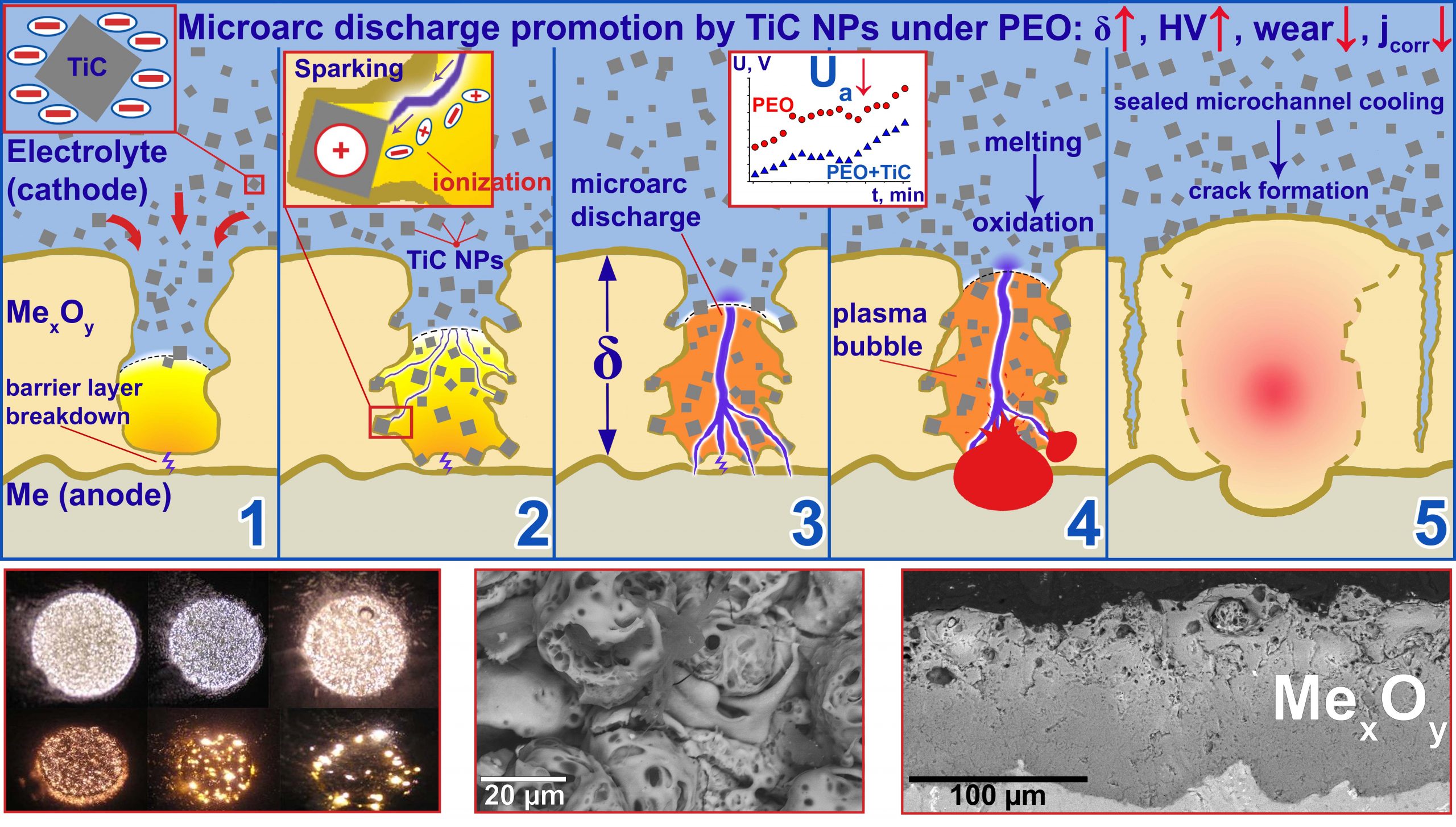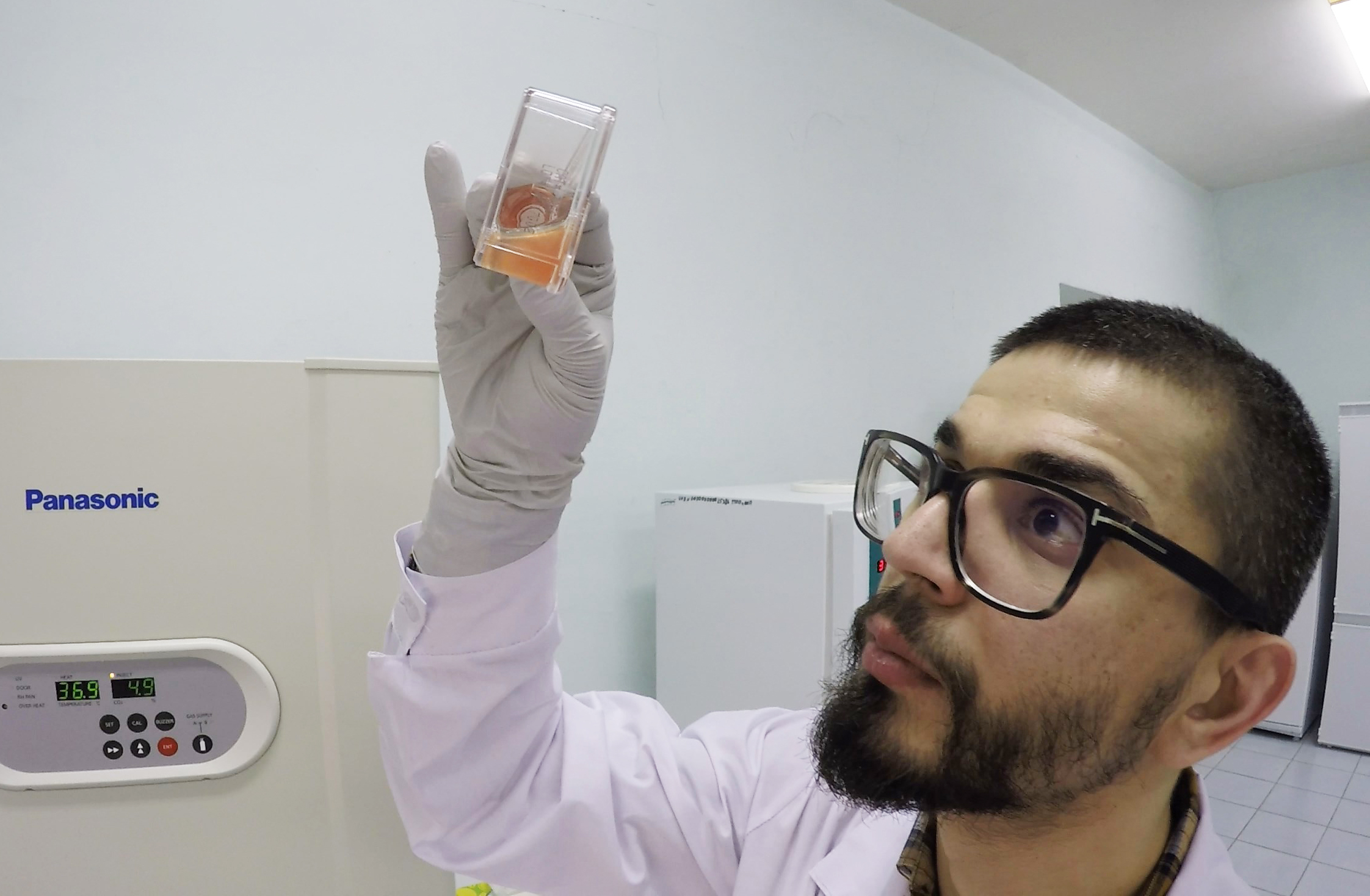Scientists from Russia and Israel have reached a macro effect using minor amounts of nanoparticles to obtain multifunctional coatings for protection against corrosion and wear of
aluminum alloys.
A group of scientists from Togliatti State University (TSU) led by Professor Mikhail Krishtal, Doctor of Physics and Mathematics, in association with Senior Researcher of Israel Institute of Technology (Technion), theoretical physicist Alexander Katsman, improved PEO technology by adding solid titanium carbide nanoparticles (TiC NPs) (with an average particles size about 80 nm) to the electrolyte.
Adding only half a gram of TiC NPs per litre of electrolyte raised the corrosion resistance of the oxide layer formed by PEO on cast aluminum-silicon alloy AK7, which is widely used in industry, by ~10 times, the hardness increased by 1.4 times, and the wear resistance by ~3 times. While TiC NPs incorporated in the formed oxide layer made up less than 1 wt. % of the layer, its thickness and mass increased by about 30%, thus raised the efficiency of the oxidation process significantly.
Despite the apparent simplicity of the PEO method, no one has managed so far to expound
without contradiction and mathematically describe the PEO phenomenon. In this
regard, the influence of nanoparticles added into the electrolyte on the PEO process has not been fully explained either.
Many issues remain unresolved, and variations in the oxidation modes lead to new non-obvious effects raising new questions.
“During PEO, the oxide layer formation occurs mainly due to the melting and intensive oxidation of the liquid metal. Micro-arc discharges occur in microscopic channels which penetrated the oxide layer, and melt the base metal,” explains Professor Krishtal.
This is preceded by vapor-gas bubbles formation in the microchannels. We suppose that solid nanoparticles, carrying a negative electric charge, are captured by these bubbles, getting accelerated by an electric field to such speeds that they colliding incorporate into the walls and bottoms of the microchannels like bullets or meteorites. They lose electrons and acquire a positive charge due to friction and heating upon collision. All this leads to sparking on the nanoparticles incorporated in the oxide layer, causing a decrease in the micro-arc initiation voltage.
Therefore, microscopic electric arcs burn longer, and there occur more such micro- discharges. This explains the increase in the intensity of metal oxidation upon the addition of nanoparticles to the electrolyte, while the process itself becomes more stable. Accordingly, more equilibrium and hard components are formed, the layer becomes more homogeneous, dense, and hard, whereas its protective properties such as wear and corrosion resistance increase.
These effects become achievable only at the nano-size range of particles and in a relatively narrow range of their concentrations. Larger microparticles cannot accelerate to the
speeds sufficient to embed into the microchannel walls, or they possibly are not even able to fit in the microchannels. That is to say, that the macro effect is obtained precisely due to the particle nano size.
“This is the case when “nano” is a real determining factor in improving the process and
properties of the formed oxide layer. It is the nanoscale size of titanium carbide particles that allow it to be optimally incorporated in the layer and achieve the best effect,” explains Anton Polunin, PhD, Head of the Laboratory of Materials Science and Technologies of Nanostructured Layers and Coatings in the Research Institute of Advanced Technologies of
TSU.
“As a result, we get an oxide layer with a new set of properties that meets more stringent requirements in mechanics and corrosion than the base oxide layer, which means that it can work in even more severe conditions. Our next step will be to adapt the obtained solutions for the processing of technical magnesium alloys.”
The intriguing effect of a very small mass amount of nanoparticles on the macro effect of a significant increase in the thickness and quality of the PEO coating can be understood by considering electric discharges striking from negatively charged clouds at flying aircraft,
positively charged due to friction against the atmosphere. These mini-lightning occurrences ionize the atmosphere (just like cosmic particles accelerated in the electric field of the Earth), thus creating the conditions to form a bolt of large lightning.
Similarly, nanoparticles incorporated in the walls of the coating microchannels cause micro-discharges (sparks) from the cathode, which ionize the vapor-gas bubble and thus prepare (facilitate) the micro-arc breakdown of the entire vapor-gas bubble, – explains Alexander Katsman, Senior Researcher of the Laboratory on Bioinspired Materials in the Technion (Israel). – This explains the relatively small (3-4%) observed decrease in the electrical breakdown voltage, however, resulting in at the same time, in a significant macro effect.
The research was supported by the Russian Science Foundation. This journal is one of the world’s leading scientific and technical research journals in the field of surface treatment and coatings (included in Q1 according to the Web of Science Core Collection, impact factor 4.16), which publish the articles contributing to a new understanding of the physical processes of surface formation of materials with new or improved properties.





